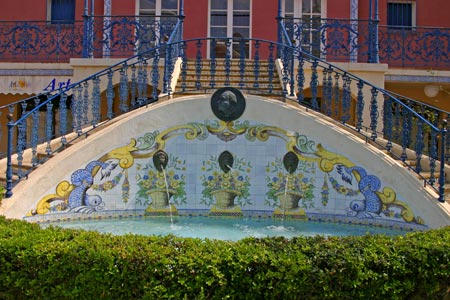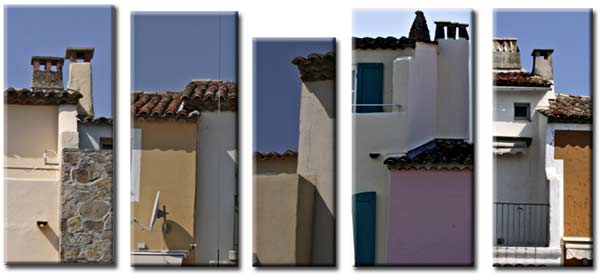
Guided tour of Port Grimaud :
We will start the visit by going to the entrance of PORT GRIMAUD as if we were discovering the lake city for the first time... 
Mediterranean architectural heritage :The aim of this visit is to show how our lakeside city fits unashamedly into the Mediterranean architectural heritage... On a short walk from the entrance to Port Grimaud to the Islet of the Church, we will discover all the details and references which, from Lisbon to Turkey, have been drawn from this vast heritage... What appeared to be pastiches to the detractors of François Spoerry's project are in fact essential elements that soften the architecture, making it more human, while integrating the city into its Provencal environment. We invite you to stroll along these whimsical alleys (It is the absence of concession to aestheticism that brings out the grace and authenticity of these never-straight streets...) and to discover here and there, a picturesque detail that surprises and delights the eye. 

Mediterranean architectural heritage :When you leave your car in the car park and approach the entrance to Port Grimaud on foot, you are immediately surprised by what looks like a citadel : Reminiscent of the Turkish forts on the barbarian coast, this polygonal construction, called the "Bachelors' Tower" because it was originally designed to house seasonal staff, gives the impression that one is entering a fortified town. This impression is accentuated by the imposing wall that extends the tower on its right, a sort of enclosure with no openings except for the access porch, the only entrance that can be reached after crossing a small bridge with a donkey's back that seems to be thrown over the watery ditches. 

Artisans' Square :Once we have passed through this porch, we arrive on a first square, very commercial, called place or cour des Artisans, with, in front of us, another vaulted porch through which we discover the imposing church… 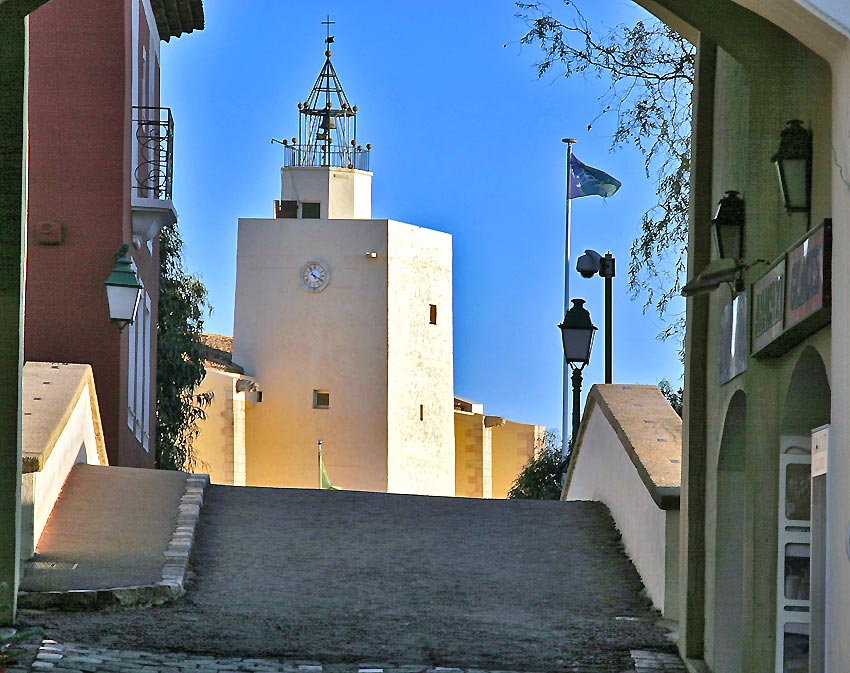
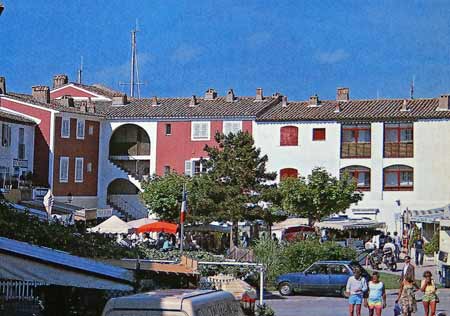
But very few tried the "adventure". On the right and at the end of the square, we can admire the external staircases with their wooden colonnades, serving the flats of a collective building; a typically Provençal staircase, which will be found in several places in the city. 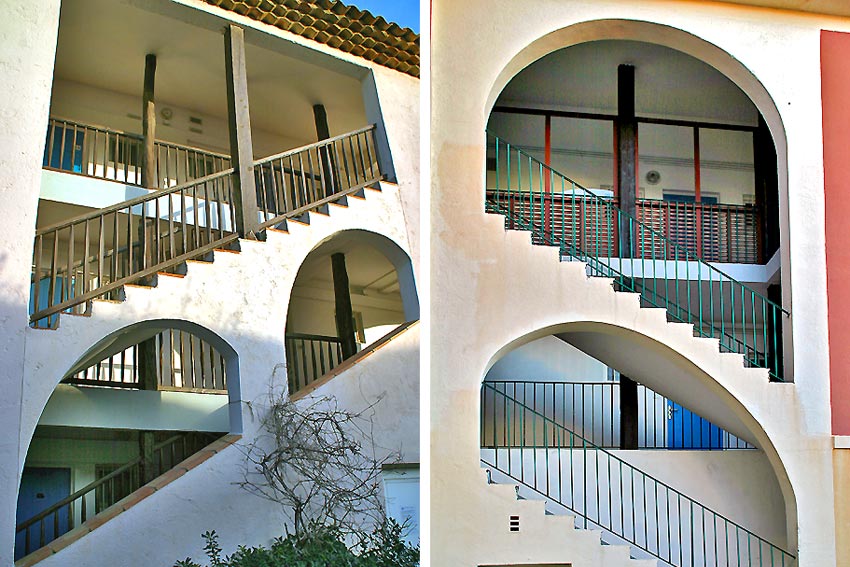

The great bridge :Let's step onto a majestic and very steep bridge, a replica of those in Venice or Chiogga, and the miracle happens: we have just entered a new world, an amphibious world, a lake city ! From the top of this bridge, we can discover all that makes the charm, the magic and the richness of Port Grimaud : To the left of the bridge :On our left, the Provençal houses, all different in their shape, their facade, their plaster colour (chosen from a colour chart of 14 colours), line up proudly along a wide canal: Sailboats or motorboats park in front of most of them…Let us appreciate the harmony that emerges from the whole, these roofs with round tiles in the Roman style, bordered by the traditional genoise… From here, we understand why, given the omnipresence of water, Port Grimaud is called "lake city !!!" To the right of the bridge :To the right of the bridge, the canal narrows on a bank lined with archs with solid buttresses, as in Saint Paul de Vence and in several villages around the Mediterranean.Note that the arches have different sizes and that the spacing between the different pillars is not regular: there is no symmetry that could create a certain monotony, as if Necessity had prevailed over aesthetic logic for the greater pleasure of the eye... 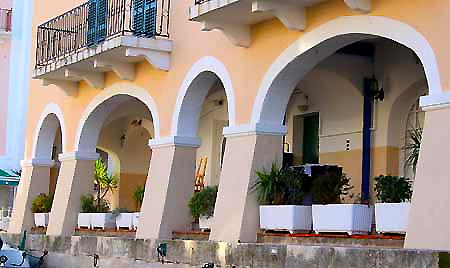
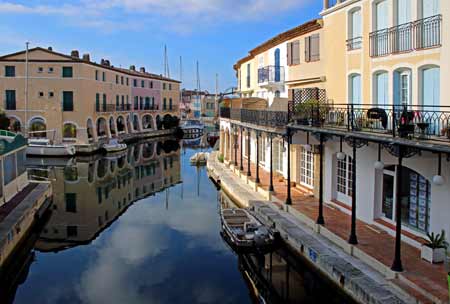
The quay opposite evokes, with its cast iron pillars supporting vast flowered terraces, certain districts of Venice or the old French quarter of New Orleans... Same concern for variety in the balustrades of the terraces, above the pillars. 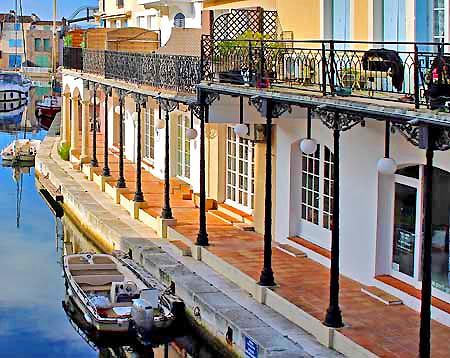
It should also be noted that the canal is not straight, the architect having chosen a route inspired more by the unevenness of the terrain than by the ease of construction... Des "Castellane" aux "Spoerry :This bridge is decorated, on the left, with an escutcheon representing the arms of the Castellane, lords of Grimaud in the sixteenth century, and on the right, with another escutcheon, representing the arms of the architect's family, the Spoerry. 
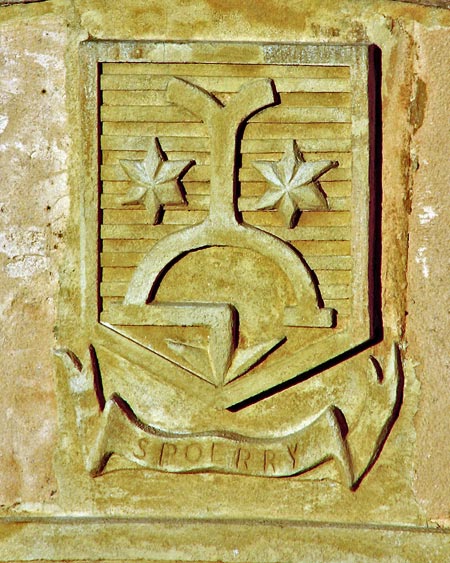

Soft architecture :

The market place :Let's go to the big square called 'place du Marché' : On the left building, looking up, we can admire an astonishing and magnificent fresco in trompe l'œil: A Provençal woman in a dress, leaning out of her window, seems to be interested in the agitation or the calmness (depending on the time of day!!!) of the square... 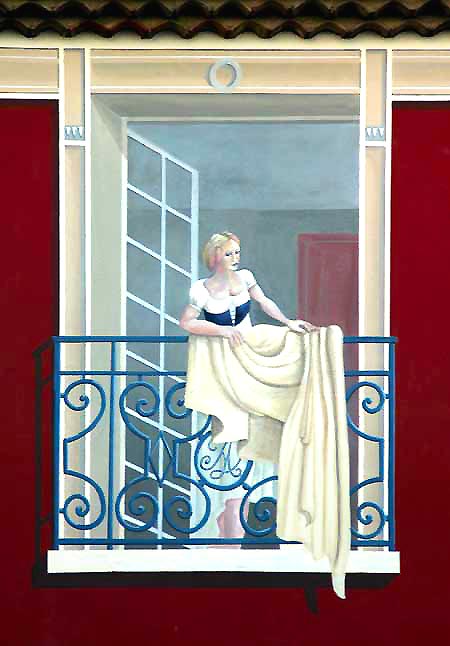
The Market Square has a deliberately asymmetrical configuration (François SPOERRY was the enemy of symmetry) -see the History!-, with an opening onto the Church Square and the inner lake. The building that stretches out on its left offers a very Italian facade with its various pastel colours decorated with numerous trompe-l'il frescos. Such frescoes can be found in many Provencal and Mediterranean villages... 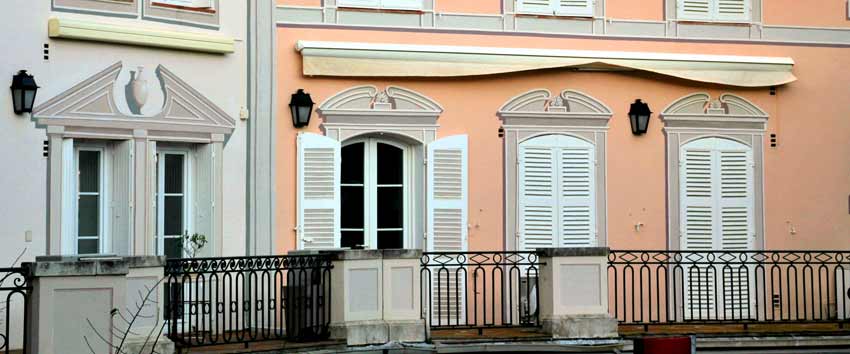
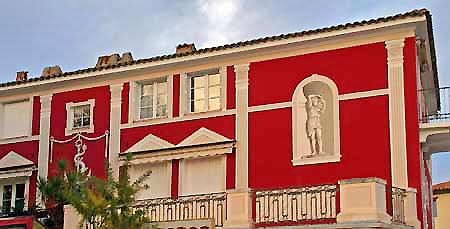

The calades :On the ground floor of this building, a covered passageway opens up, pierced by asymmetrical arcades bordered by vigorous buttresses, a passageway that serves to protect walkers from the burning rays of the sun or the raindrops of a sudden downpour. This passage is paved with pebbled mosaics: the calades. Completed in two months, the 200,000 or so pebbles that make up these calades draw motifs related to the speciality of each business, in the manner of the sidewalks of Lisbon: A purse represents the bank, a spray bottle the perfume shop, a loaf of bread the bakery... The shops have changed destination and these calades suffer from ageing and a crucial lack of maintenance. Many pebbles have disappeared whereas everything should be done to restore and maintain this work of art... Voir la page consacrée aux calades de Port Grimaud 
The covered passages :

Church Square :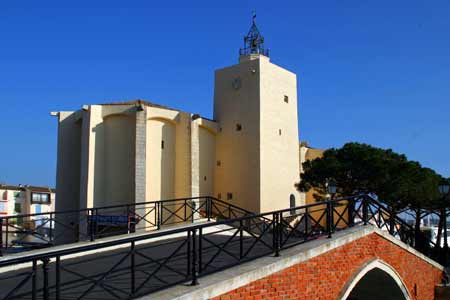
At the end of the square, on an islet accessible by a small brick bridge, stands the ecumenical church of Saint Francis of Assisi. Majestic, it is reminiscent of the one in Les Saints-Maries de la Mer. See the page dedicated to the construction of the Church in the HISTORY Opposite it, the Common House (former annex of the Town Hall and Post Office) : The common house has only one floor. Its main door is framed by ashlars of coarse-grained golden limestone with carved scallops, the symbol of pilgrims on their way to Santiago de Compostela... 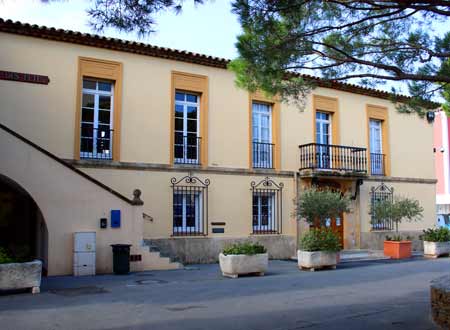
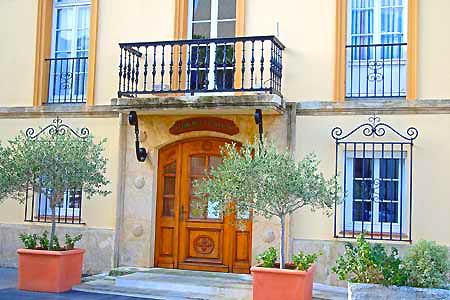
The wrought iron balcony and window guards are Andalusian inspired... The facade overlooking the inner lake, with its balustraded balcony and ground floor arcades, is reminiscent of certain Venetian houses (the Pescheria in Venice for example). 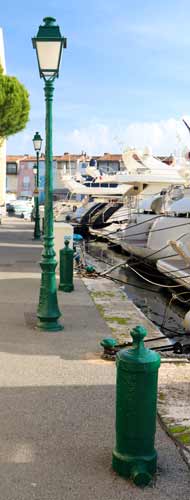
On the quay around the common house, boats can moor using cast iron mooring bollards. They are shaped like old cannons planted vertically to the trunnions... Identical ones can be found in all the old "marine" cities around the Mediterranean. All along our walk, we came across cast iron lamp posts. If they are not especially Provençal, their charm serves to accentuate the "old-fashioned" character of the architecture. The first lamp posts came from Mulhouse, hence the arms of this city still visible on their feet... In the same way, the Renaissance basin leaning against the wall of the town hall adds a "historical" cachet to the lakeside town... 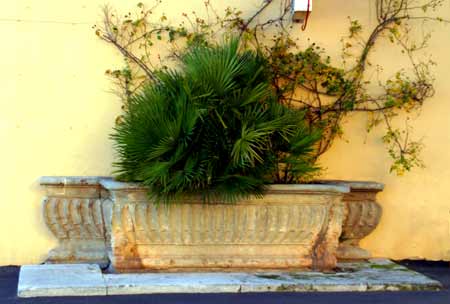

The finish... :
Our visit ends here... But yours can go on: we invite you to stroll through the small and whimsical streets to discover all those charming details that make our pretty village even more "real", thus sowing doubt in the amazed minds of the visitors, surprised by the taste and the care taken "to the restoration of an old village!!!" No innovation: the architect François SPOERRY has simply picked, but with what talent, from the local architecture, to select the best ideas : As you stroll along, you may discover a dovecote whose small windows are surrounded by glazed earthenware tiles in the Provençal style. Look for the stone balustrade of a loggia here, the wooden colonnades of a staircase there or a ceramic street sign.. And never forget that everything has been studied with particular care in order to achieve a very harmonious whole in its variety... some details, in bulk, that I invite you to find : 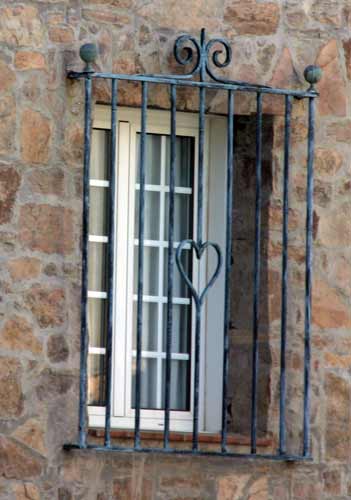
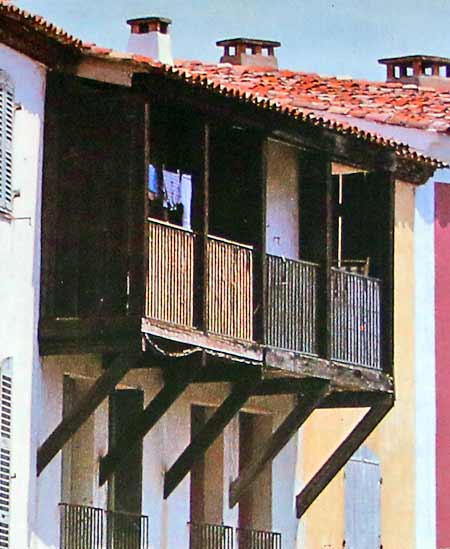
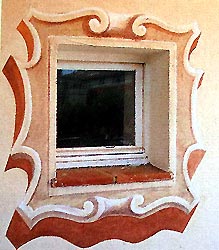

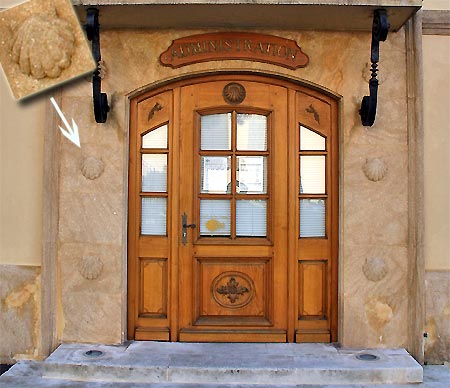


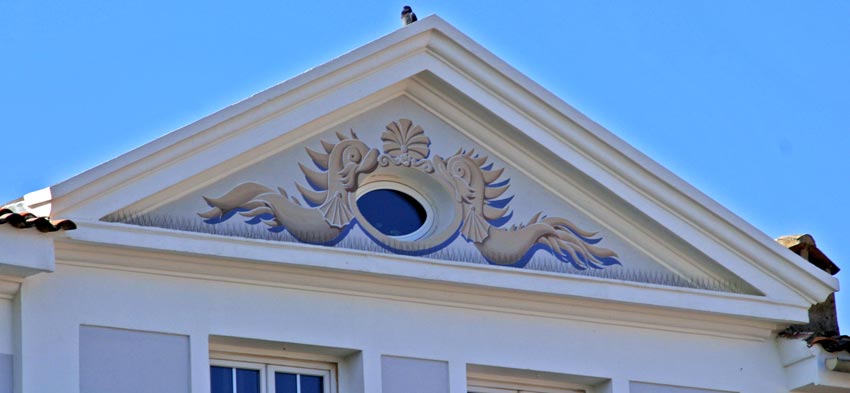

Some final remarks :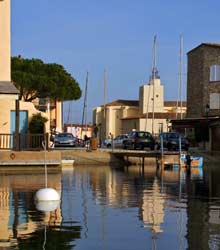
Port Grimaud is divided into several small residential areas, the privacy of which is ensured by crossing a bridge or passing under a porch. The street leading to these living areas dedicated to rest, away from the lively centre and shops of the village, is pleasantly lined with gardens behind which the entrance to each house is hidden... In each street, the architect has created "small ports" or "small plagettes", which intrude between the houses: these indentations are about twenty metres wide and are sometimes equipped with a pontoon where water boats can moor. Sometimes two plazas face each other on either side of a street: the view then takes in several channels... 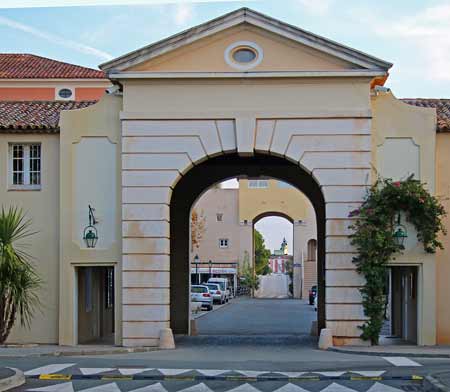 The most beautiful "breakthrough", a virtuosity of the architect, is in Place du Sud: from the centre of the square, the view escapes through the porch leading to the round island, and takes in the Canal du Midi, the street of the two islands, to end up on the bell tower of the Church, at the other end of the town ! 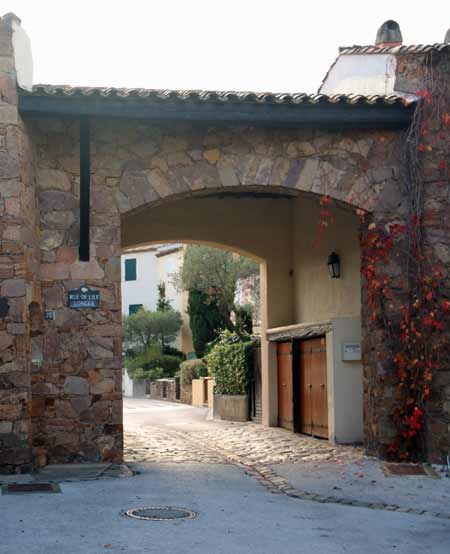

The François SPOERRY square :

The beauty of PORT GRIMAUD :

|
© Yves Lhermitte 2022 Reproduction prohibited without permission...
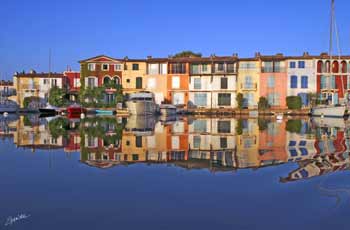
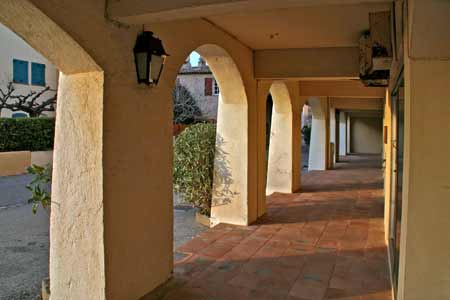
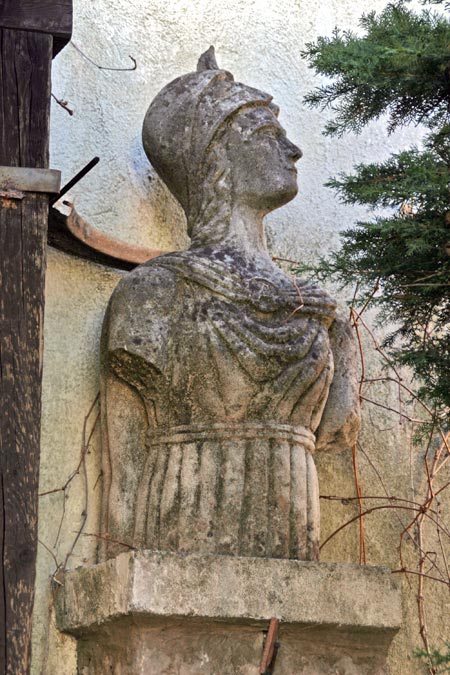
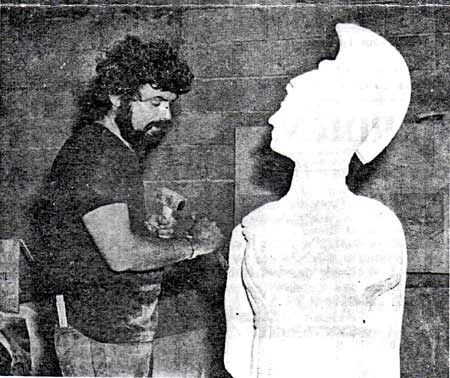
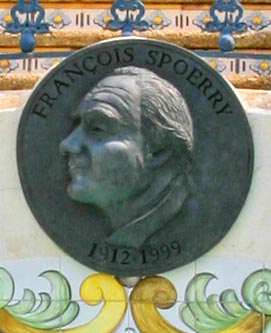 Don't leave Port Grimaud without admiring the pretty fountain, decorated with ceramics (Portuguese azulejos) with floral motifs, in the Place du Sud, renamed Place François SPOERRY.
Don't leave Port Grimaud without admiring the pretty fountain, decorated with ceramics (Portuguese azulejos) with floral motifs, in the Place du Sud, renamed Place François SPOERRY.
